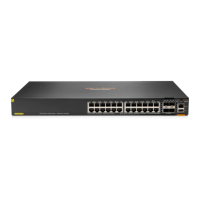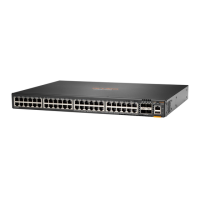100
Figure 33 Edge port rapid transition
Root port rapid transition
When a root port is blocked, the bridge will elect the alternate port with the highest priority as the new
root port. If the new root port's peer is in the forwarding state, the new root port immediately transits
to the forwarding state.
As shown in Figure 34, Port C2 on
Device C is a root port and Port C1 is an alternate port. When Port
C2 transits to the blocking state, Port C1 is elected as the root port and immediately transits to the
forwarding state.
Figure 34 Root port rapid transition
P/A transition
The P/A transition enables a designated port to rapidly transit to the forwarding state after a
handshake with its peer. The P/A transition applies only to point-to-point links.
• P/A transition for RSTP and PVST.
In RSTP or PVST, the ports on a new link or recovered link are designated ports in blocking
state. When one of the designated ports transits to the discarding or learning state, it sets the
proposal flag in its BPDU. Its peer bridge receives the BPDU and determines whether the
receiving port is the root port. If it is the root port, the bridge blocks the other ports except edge
ports. The bridge then replies an agreement BPDU to the designated port. The designated port
immediately transits to the forwarding state upon receiving the agreement BPDU. If the
designated port does not receive the agreement BPDU, it waits for twice the forward delay to
transit to the forwarding state.
As shown in Figure 35, the P/A transition ope
rates as follows:

